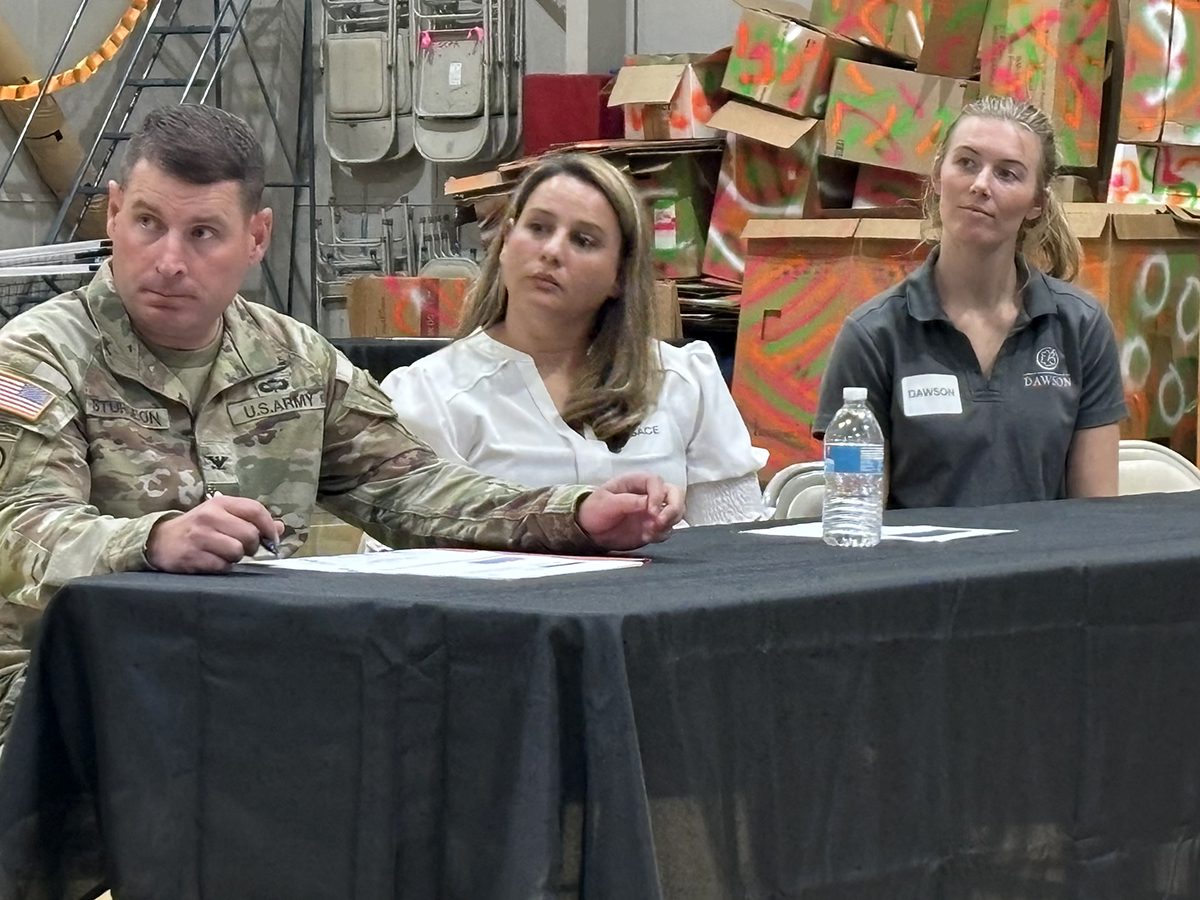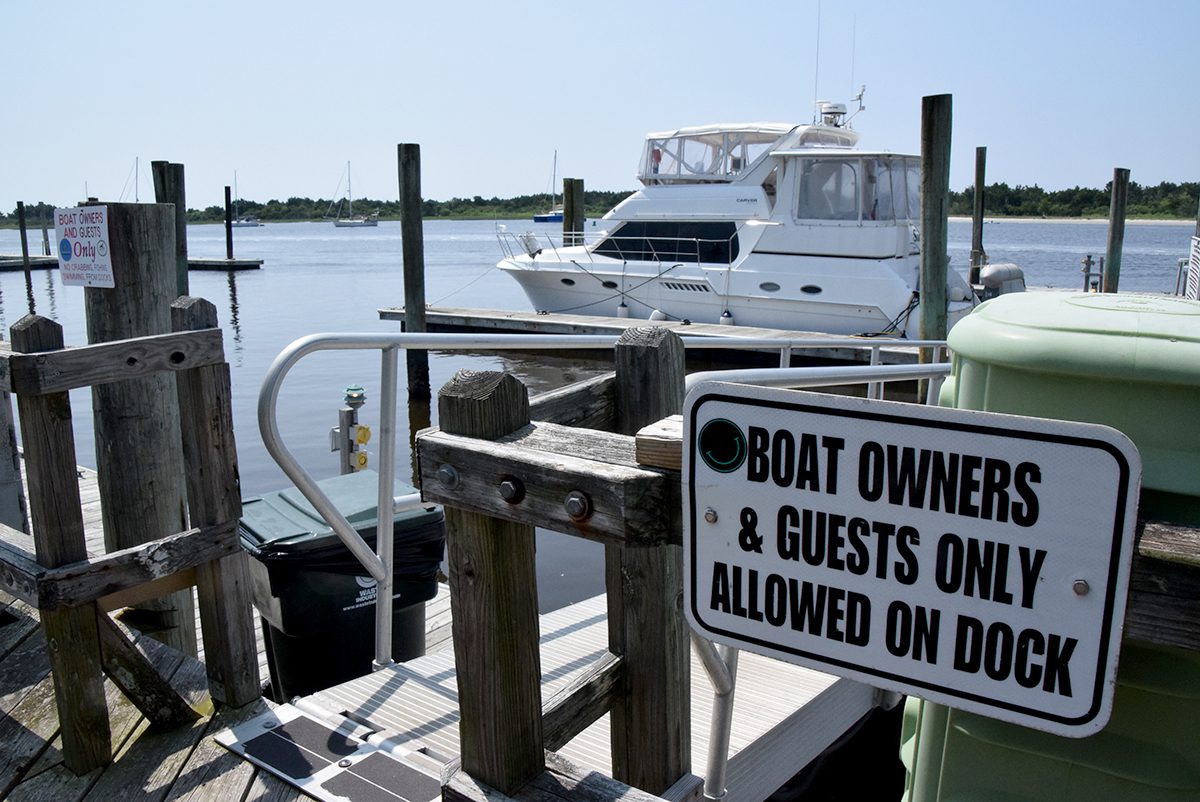
HATTERAS ISLAND — With ongoing removal of petroleum-contaminated soil from Buxton Beach, along with a considerable amount of remnant building debris trucked away since September, a community meeting hosted Monday evening by U.S. Army Corps of Engineers representatives revealed notably less frustration and even a hint of a friendly partnership vibe.
“I expect them to do the very best they can,” said Jeff Dawson, a member of the Buxton Civic Association, speaking after the meeting at the Fessenden Center in Buxton in reference to the Corps’ current response.
Supporter Spotlight
That’s a big difference from the alarm bells the newly formed group of village residents had been ringing about the petroleum pollution and old building debris first exposed on the eroding beach by a series of storms about a year and a half earlier.
“It’s like ‘Yay!’” Dawson added. “But why did they take so long?”
Brief updates of the cleanup project were provided, but the main impetus for the meeting was to present an overview about creating a Restoration Advisory Board, or RAB in government-speak.
In a slide presentation, Alexandra Jangrell-Tackett, program manager with Dawson, the Corps’ public outreach contractor, explained that a RAB would provide an option for the community to share information about work at what is officially known as Buxton Naval Facility, a Formerly Used Defense Sites, or FUDS, as a way to keep residents updated on the actions taking place at the Buxton Naval Facility.
The 50-acre site is entirely located within the Cape Hatteras National Seashore.
Supporter Spotlight
While a RAB allows for “concerns, needs or values” of a community to be conveyed, similar to a public meeting, it is more formal, with two co-chairs who conduct regular meetings that have agendas and minutes. It serves as a liaison between the Corps and the affected community.
“It’s important to note that a RAB is not a decision-making body,” Jangrell-Tackett said. “However, it’s that avenue for communication exchange.”
RABs are established with “sustained and sufficient” interest from communities where active environmental restoration projects are being done at Department of Defense sites, Jangrell-Tackett said during her presentation.
But a community also has the option of just holding public meetings concerning the cleanup work, she said.
While a RAB allows for “concerns, needs or values” of a community to be conveyed similar to a public meeting, Jangrell-Tackett explained, it is more formal, with two co-chairs — one from the community, one from the defense department — who conduct regular meetings that are structured with agendas, a mission statement, operational procedures and minutes.
Each RAB could have up to 30 members, each with two-year terms in the role of liaisons.
A survey on the community’s interest in a RAB was provided by the Corps, which will evaluate it after the deadline in 30 days.
Brian Harris, a member of the Buxton Civic Association, said after the presentation that he was very pleased with the Corps’ latest cleanup efforts and willingness to communicate with the community.
“Everything’s great — we love it,” he said. “Obviously, we want the RAB.”
Harris added that either a member or the overall association would be willing to serve as the RAB community member, but they’ll know more after the results of the survey are completed and further discussion is held with the Corps.
Since the Corps’ FUDS office took responsibility in 1991 for environmental restoration at the former Naval base near today’s Buxton Beach, it had removed 50 storage tanks and 4,000 tons of petroleum-contaminated soil. It has also conducted groundwater remediation and continued monitoring.
After a series of summer storms in 2023 exposed huge chunks of concrete that was once bits of buried Navy buildings, surfers and other locals started noticing strong diesel odors at the beach and a sheen in the ocean.
FUDS investigators responded, but over the months they had had difficulty determining the source of the intermittent petroleum stench.
Then, in September, more storms left an even stronger petroleum odor on the beach, resulting in the current, more visibly aggressive FUDS response.
“It was really that event that was a catalyst to get us out to that site,” said Col. Ronald Sturgeon, the Corps’ Savannah District commander, while speaking with reporters after the meeting.
Sturgeon noted that severe erosion had complicated detection of the petroleum.
“There was 15 more feet of beach there … That Building 19, the major source of the infrastructure, was 2 to 300 meters away from the ocean,” he said. “Now it’s in the ocean.”
After being back and forth doing testing at the site for more than a year, the Corps finally saw the evidence before their eyes in September, and responded.
Related: Work gets underway to pinpoint Buxton pollution source
“The release of the petroleum out of the site was a shock,” he said. “My team really pulled together and got a contractor to the site in record time. It was under two weeks … for this type of thing, it’s actually really fast.
“And once we started digging up some of the soil, removed some of the infrastructure and started to take those readings, yeah, there was a lot of (petroleum) contamination there that we weren’t tracking.”
Sturgeon said that the contractor had removed a large amount of infrastructure in order to test and access the petroleum contaminated-soil underneath, but the Corps does not have the authority to remove any additional remnant infrastructure unless it is hampering the petroleum contamination removal.
The contractors also removed about 18,000 gallons of water from the site, which was put in a machine to sort out whatever contaminants it may contain, he said.
Excavations began Oct. 2, according to the Corps, and were expected to be completed in 60 days. To date, 505 cubic yards and 11,000 gallons of petroleum-impacted soil and water, as well as approximately 82,400 pounds of concrete, 1,133 feet of pipes and 1,030 feet of metal cables and wires have been removed, the Corps said.
A contract for comprehensive sampling is expected to be awarded by Nov. 15, Sturgeon said. The sampling will delineate the nature and extent of any petroleum contamination remaining at the FUDS property.
The cleanup will be considered completed after it falls within the state Department of Environmental Quality standards. The Corps is also working closely with the National Park Service.
“We have focused in on immediate action that was required in specific zones,” Sturgeon said. “We will continue to sample within the FUDS boundary.”
But, Sturgeon said, the source of the petroleum is still unknown.
“If I knew that, I tell you what, we’d solve the problem already,” he said, adding the mystery is why the Corps is doing further work. “We have plans to sample the entire site.”







